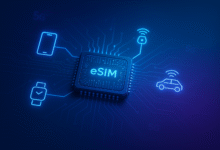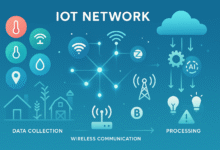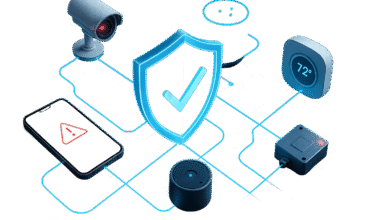
As the world becomes increasingly connected, the Internet of Things (IoT) continues to expand its footprint in both personal and professional spheres. From smart thermostats and connected appliances in homes to industrial sensors and medical devices, IoT technology is revolutionizing how we live and work. However, this digital transformation brings a significant risk: cyber threats. For residents and businesses in Germany, one pressing question emerges: Is cyber insurance for IoT devices worth it?
In this article, we explore what cyber insurance for IoT devices entails, its relevance in the German context, its benefits and limitations, and whether it is a prudent investment in today’s hyper-connected world.
Understanding Cyber Insurance for IoT Devices
Cyber insurance for IoT devices is a specialized policy designed to cover financial losses and liabilities that arise from cyberattacks targeting internet-connected devices. These policies can provide protection against various threats, including data breaches, ransomware, device hijacking, and operational disruptions.
Given the vulnerabilities inherent in many IoT devices, especially those with limited processing power and outdated firmware, this type of insurance offers a potential safety net against increasingly sophisticated cyberattacks.
What IoT Devices Are Covered?
Cyber insurance can cover a wide range of devices, including but not limited to
- Smart home systems (e.g., lighting, security cameras, thermostats)
- Wearables (e.g., fitness trackers, smartwatches)
- Industrial IoT (IIoT) equipment
- Healthcare devices (e.g., connected insulin pumps)
- Smart appliances (e.g., refrigerators, ovens)
Coverage specifics can vary significantly between providers, so it is crucial for policyholders to understand the scope of their protection.
The IoT Landscape in Germany
Germany stands at the forefront of technological innovation, particularly in the realms of Industry 4.0 and smart infrastructure. The country has embraced IoT technology across various sectors, including manufacturing, transportation, and healthcare.
However, with increased connectivity comes increased vulnerability. According to a 2023 report by the German Federal Office for Information Security (BSI), cyberattacks on IoT devices have seen a 30% year-over-year increase. These attacks are not only more frequent but also more sophisticated, targeting both consumer- and enterprise-level devices.
Regulatory Environment
Germany has a robust regulatory framework for data protection, spearheaded by the General Data Protection Regulation (GDPR). While GDPR primarily addresses data privacy, it has implications for IoT devices that collect and transmit personal data. Non-compliance can lead to hefty fines, making cyber insurance even more relevant as a risk mitigation tool.
Benefits of Cyber Insurance for IoT Devices
1. Financial Protection
One of the most compelling reasons to invest in cyber insurance is financial coverage. Cyberattacks can lead to significant costs, including:
- System restoration
- Legal fees
- Regulatory fines
- Ransom payments
- Business interruption losses
Cyber insurance can help offset these costs, providing peace of mind and financial stability.
2. Incident Response Support
Many cyber insurance providers offer 24/7 incident response services. This support often includes access to cybersecurity experts, forensic investigators, and legal consultants who can guide organizations through crisis management and recovery.
3. Compliance Assistance
Navigating the complex regulatory landscape can be challenging. Insurance providers often assist policyholders in meeting compliance requirements, particularly around GDPR and other European data protection laws.
4. Reputation Management
A cyber incident can severely damage a company’s reputation. Some policies include public relations services to help manage communication and restore customer trust after a breach.
Limitations and Challenges
1. Exclusions and Limitations
Not all cyber insurance policies are created equal. Some may exclude specific types of attacks or devices. For instance, outdated devices or those lacking basic security features may not be covered. It’s essential to read the fine print and understand what is and isn’t included.
2. High Premiums
In Germany, premiums for cyber insurance can be relatively high, especially for businesses in high-risk sectors or with extensive IoT deployments. Cost can be a deterrent, particularly for small and medium-sized enterprises (SMEs).
3. Complexity in Claims
Filing a claim can be a complex process requiring substantial documentation and proof of loss. Insurers may require evidence that adequate cybersecurity measures were in place prior to the incident.
4. Evolving Threat Landscape
The cyber threat landscape is constantly evolving. Insurance policies may not always keep pace with new types of attacks or emerging vulnerabilities, potentially leaving gaps in coverage.
Is Cyber Insurance for IoT Devices Worth It?
For Businesses
For German businesses, especially those in manufacturing, healthcare, and logistics, cyber insurance for IoT devices is increasingly becoming a necessity. The potential costs associated with a cyberattack can far outweigh the premium costs of a comprehensive policy. Moreover, businesses that handle sensitive data or rely heavily on automated systems should view cyber insurance as an integral part of their risk management strategy.
For Consumers
While individual consumers may not face the same level of risk as businesses, those with multiple smart home devices or connected health equipment could also benefit from cyber insurance. However, consumer-grade policies are still relatively rare and may not provide comprehensive coverage.
Best Practices for IoT Security in Germany
Before purchasing insurance, it is advisable to strengthen your cybersecurity posture. This not only reduces risk but can also lead to lower premiums. Key best practices include
- Regularly updating firmware and software
- Using strong, unique passwords
- Enabling two-factor authentication (2FA)
- Network segmentation for IoT devices
- Monitoring and logging device activity
Choosing the Right Cyber Insurance Policy
When selecting a policy, consider the following:
- Coverage Scope: Ensure the policy covers all relevant IoT devices and threat scenarios.
- Claim Process: Understand the documentation and steps involved in filing a claim.
- Support Services: Look for policies that offer incident response and legal support.
- Reputation: Choose insurers with a strong track record in cyber coverage.
Conclusion
In an era where cyber threats are both omnipresent and increasingly sophisticated, cyber insurance for IoT devices provides a critical layer of protection. For individuals and businesses in Germany, the decision to invest in such insurance should be informed by an assessment of risk, potential financial impact, and existing security measures.
While not a silver bullet, cyber insurance is a valuable component of a holistic cybersecurity strategy. Given Germany’s advanced technological landscape and strict regulatory environment, the benefits of cyber insurance often outweigh the costs, making it a worthwhile consideration in safeguarding your digital assets.











